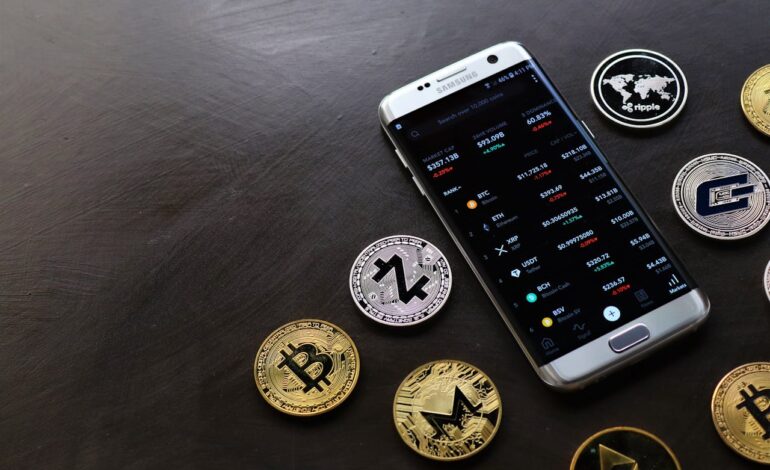
Explore the Market Potential: Start Trading ETH Now
Ethereum 2.0, often referred to as Eth2 or Serenity, represents a monumental shift in the Ethereum blockchain’s architecture, transitioning from a Proof of Work (PoW) consensus mechanism to Proof of Stake (PoS). This transition is not merely a technical upgrade; it is a fundamental rethinking of how the network operates, aiming to enhance scalability, security, and sustainability. The PoW model, which relies on energy-intensive mining processes, has been criticized for its environmental impact and inefficiency.
In contrast, PoS allows validators to create new blocks and confirm transactions based on the number of coins they hold and are willing to “stake” as collateral. This shift is expected to reduce energy consumption by over 99%, addressing one of the most pressing concerns surrounding blockchain technology. The phased rollout of Ethereum 2.0 began with the Beacon Chain launch in December 2020, which introduced PoS and laid the groundwork for future upgrades.
Subsequent phases will integrate shard chains, which will significantly increase the network’s capacity by allowing parallel processing of transactions. This means that instead of all transactions being processed sequentially, they can occur simultaneously across multiple shards, drastically improving throughput. The anticipated benefits of this transition are profound; not only will it enhance user experience through faster transaction times and lower fees, but it will also attract a broader range of applications and users to the Ethereum ecosystem.
The ETH future market is a dynamic space where traders can profit from Ethereum’s price swings. Whether you’re anticipating a rally or a correction, futures allow you to act quickly and strategically. MEXC offers a professional-grade platform with low latency and robust risk controls. Perfect for those who thrive on volatility and fast decision-making.
Democratization of Finance through DeFi
DeFi platforms leverage smart contracts to recreate traditional financial systems—such as lending, borrowing, and trading—without intermediaries. This democratization of finance has opened up access to financial services for millions who were previously excluded from the traditional banking system. For instance, platforms like Aave and Compound allow users to lend their assets in exchange for interest or borrow against their crypto holdings, all facilitated by automated smart contracts that eliminate the need for trust in a central authority.
NFTs Revolutionize Digital Ownership
NFTs have revolutionized the concept of ownership in the digital realm. By utilizing Ethereum’s smart contract capabilities, NFTs provide a way to represent ownership of unique digital assets, ranging from art and music to virtual real estate and collectibles.
Mainstream Recognition for NFTs
The explosion of NFT marketplaces like OpenSea and Rarible has created new opportunities for artists and creators to monetize their work directly, bypassing traditional gatekeepers in the art world. High-profile sales, such as Beeple’s digital artwork selling for $69 million at Christie’s auction house, have brought mainstream attention to this sector, further solidifying Ethereum’s position as the leading platform for digital assets.
Scaling Solutions: The Pursuit of Faster and Cheaper Transactions
As Ethereum continues to grow in popularity, the demand for faster and cheaper transactions has become increasingly critical. The network has faced challenges related to congestion and high gas fees during peak usage times, which can deter users and developers alike. To address these issues, various scaling solutions have been proposed and implemented.
Layer 2 solutions, such as Optimistic Rollups and zk-Rollups, are designed to process transactions off-chain while still leveraging the security of the Ethereum mainnet. These solutions can significantly reduce transaction costs and increase throughput by bundling multiple transactions into a single one before submitting it to the main chain. Another approach to scaling is sharding, which is an integral part of Ethereum 2.0’s roadmap.
Sharding involves splitting the Ethereum network into smaller partitions or “shards,” each capable of processing its transactions and smart contracts independently. This method not only enhances scalability but also improves overall network efficiency by distributing the load across multiple shards. As these solutions mature and gain adoption, they promise to alleviate some of the current limitations faced by Ethereum users, making it a more viable platform for a wide range of applications—from gaming to enterprise solutions.
Regulatory Challenges: Navigating the Legal and Compliance Landscape
As Ethereum’s ecosystem expands, so too does its interaction with regulatory frameworks around the world. The rise of DeFi and NFTs has prompted scrutiny from regulators concerned about consumer protection, anti-money laundering (AML), and tax compliance. In many jurisdictions, existing laws were not designed with blockchain technology in mind, leading to uncertainty about how these regulations apply to decentralized platforms.
For instance, questions arise regarding whether DeFi protocols should be classified as financial institutions or whether NFT marketplaces need to comply with securities regulations. Navigating this complex legal landscape requires a proactive approach from developers and businesses operating within the Ethereum ecosystem. Many projects are beginning to implement compliance measures voluntarily, such as Know Your Customer (KYC) processes for users engaging in high-value transactions or integrating features that allow for tax reporting on earnings from DeFi activities.
Additionally, industry groups are advocating for clearer regulatory guidelines that can foster innovation while ensuring consumer protection. As regulators continue to adapt to this rapidly evolving space, the outcome will significantly influence how Ethereum projects operate and grow in the future.
Competition and Collaboration: Ethereum’s Position in the Blockchain Industry
Ethereum’s position as a leading blockchain platform is both bolstered and challenged by a dynamic landscape of competitors and collaborators. While Ethereum remains the go-to platform for DeFi and NFTs due to its robust smart contract capabilities and large developer community, other blockchains like Binance Smart Chain (BSC), Solana, and Cardano are gaining traction by offering faster transaction speeds and lower fees. These competitors often attract projects that seek immediate scalability solutions without waiting for Ethereum 2.0’s full implementation.
However, competition does not preclude collaboration within the blockchain space. Many projects are exploring cross-chain interoperability solutions that allow assets and data to move seamlessly between different blockchains. Protocols like Polkadot and Cosmos are designed specifically for this purpose, enabling developers to build applications that can leverage multiple networks’ strengths.
Additionally, Ethereum itself is evolving through partnerships with various organizations aiming to enhance its capabilities—such as integrating with layer-2 solutions or collaborating on research initiatives focused on improving scalability and security. This collaborative spirit may ultimately strengthen Ethereum’s position in the industry by fostering an ecosystem where diverse technologies can coexist and thrive.
The Impact of Upcoming Upgrades: EIP-1559 and EIP-3675
Ethereum Improvement Proposals (EIPs) play a crucial role in shaping the future of the Ethereum network, with EIP-1559 and EIP-3675 being two significant upgrades that promise to impact its functionality profoundly. EIP-1559 introduced a new fee structure aimed at improving transaction fee predictability by implementing a base fee that adjusts according to network demand. This change not only enhances user experience by reducing uncertainty around gas prices but also introduces a deflationary mechanism by burning a portion of transaction fees—effectively reducing the total supply of Ether over time.
EIP-3675 is another pivotal upgrade that focuses on facilitating Ethereum’s transition from PoW to PoS more smoothly. By enabling a seamless merge between the existing Ethereum mainnet and the Beacon Chain, EIP-3675 aims to ensure that all existing applications can continue functioning without disruption during this critical transition phase. This upgrade is essential for maintaining user confidence in the network while also attracting new developers who may have been hesitant due to concerns about stability during such a significant change.
Together, these upgrades represent not just technical enhancements but also a philosophical shift towards sustainability and user-centric design within the Ethereum ecosystem. As these proposals are implemented, they will likely influence how users interact with the network and how developers build applications on it—ultimately shaping Ethereum’s trajectory in an increasingly competitive blockchain landscape.







